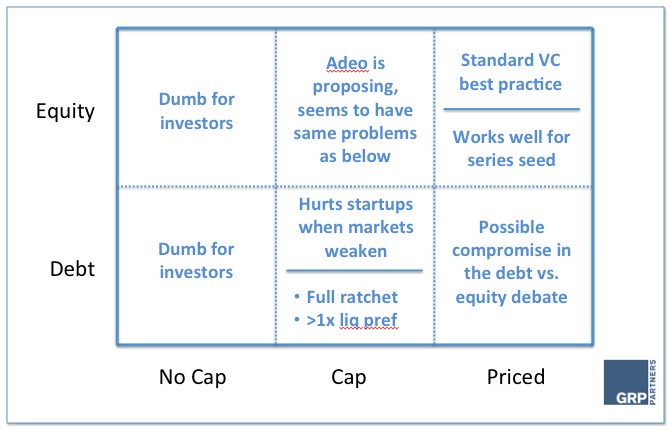What Is Preferred Stock v Stock – Definition Pros Cons
Post on: 27 Апрель, 2015 No Comment

Just another creative way to save Money which makes Cents
What Is Preferred Stock vs. Common Stock – Definition, Pros & Cons
Preferred stock is one of the two types of stock issued by corporations seeking to bring in capital. As with common stocks or bonds. the money that is received from the sale of these shares goes into the company coffers in return for the issuance of the shares to the shareholders.
Although preferred stock does share similarities with common stock, its basic characteristics make it a fundamentally different security. Preferred stock is designed to function primarily as a fixed-income security, whereas common stock is usually considered to be a vehicle for long-term growth that often does not deliver a regular income stream. The nature and purpose of preferred stocks offers shareholders several unique advantages when compared to other investments.
Characteristics of Preferred Stock
Preferred stock is considered to be a hybrid security, having some of the characteristics of common stock but also resembling fixed income offerings in many respects. Unlike common stocks, preferred stocks tend to stay relatively stable in price after their issuance (most preferred IPOs are priced at $25 a share). They behave more like bonds than stocks in a number of ways, as they pay regular dividends at either a set or variable rate of interest, and their prices fluctuate in the secondary market in accordance with interest rates.
Preferred stocks are also assigned a safety rating, such as AA by the same credit ratings agencies that grade other types of fixed income securities, such as Moody’s and Standard & Poor’s. Preferred stocks often pay dividends on a quarterly basis, although some of them pay monthly.
On the risk-to-reward scale, preferred stock is generally considered to be just slightly more risky than corporate bonds, but safer than common stock. This is because preferred stockholders will receive their principal back after all bondholders have been paid, but before common shareholders in the event of corporate liquidation. That said, preferred stockholders can technically lose their entire investment, like common shareholders, though they’re much less likely to do so.
Preferred stocks can carry several additional features, such as:
- Cumulative Dividends. Cumulative preferred offerings promise that any dividends that go unpaid will be repaid in the future when the issuer is able to make up the payments.
- Participation. Participating preferred issues have the potential to pay more than their stated dividend rate if the issuer does well financially. Each participating issue has its own formula that is used to calculate any additional amount that is paid. This type of preferred stock is fairly rare.
- Convertibility. Some preferred issues can be converted into a set number of shares of common stock after a certain period of time in the same manner as a convertible bond. The issuer sets the conditions under which the stock can be converted.
Most preferred stock offerings are issued by financial entities, such as banks and insurance companies. Companies in heavy industry, technology, and healthcare tend to focus more on growth and reinvesting their funds back into the company. Therefore, they seldom use preferred securities as a means of raising capital.
Advantages of Preferred Stock
Preferred stocks are popular with investors who seek income for several reasons. Some of the major advantages that they offer include:
- Higher Rates of Interest. Preferred shares typically offer superior rates than guaranteed instruments such as CDs, fixed annuities. and treasury securities . Over the past few decades, preferred offerings as an asset class have usually paid dividends in the 7% to 10% range.
- Preferential Dividend Payout. Preferred shareholders also usually receive their dividends before anything is paid to common shareholders.
- Price Stability. While the price of preferred stocks is subject to market action, they generally do not vacillate more than a dollar or two from their initial par value, and are often less vulnerable to price fluctuation than bonds.
- Greater Liquidity. Preferred shareholders can sell their shares at any time without having to pay an early withdrawal penalty such as those that are usually levied by CDs or fixed annuities.
- Smaller Up-front Investment Costs. Investing in preferred stocks generally requires less capital than comparable bond issues. The cost of 100 shares of preferred stock is often around $2,500, while the cost of 100 newly issued bonds will typically equal $100,000.

Disadvantages of Preferred Stock
Some of the major disadvantages of preferred stocks include:
- Lack of Voting Rights. Due to their preferential treatment in the event of insolvency, preferred shareholders do not have the voting rights that come with common stock.
- Callability. Preferred stocks can be called by their issuers if interest rates fall in the same manner as bonds. For example, a company may issue a preferred offering paying 7% that is callable in five years. If interest rates drop by 3% in that time, the company will most likely call the shares back and issue new shares paying around 4% when the stock becomes callable.
- Nonpayment of Dividends. Owners of preferred shares also may not receive any dividends for a period of time if the issuer experiences financial distress. However, those who hold cumulative shares will receive their unpaid dividends when the company is again able to meet its obligations. But those who hold other types of preferred stock will not receive their unpaid dividends once the company is again able to pay dividends.
- Lack of Capital Gains. While preferred stocks do pay higher dividends than bonds, they also offer little or no potential for material capital gains of any kind, as they usually trade within a few dollars of their issue price as long as they are outstanding.
Investor Appropriateness and Portfolio Allocation
Any investor who seeks income with moderate risk is a good candidate for preferred stocks. Many corporations also buy preferred issues because of the favorable tax treatment that corporations receive when they are paid dividends from another corporation. Some preferred issues even qualify for long-term capital gains treatment on their dividends, although this is not common.
The proper allocation of preferred stocks in an investment portfolio will vary substantially according to the investor’s risk tolerance and need for income. A combination of convertible, cumulative, and participating issues can provide both current income and upside potential while limiting risk. The risk-to-reward spectrum for preferred stocks closely resembles that of bonds: Those with higher ratings are safer and pay slightly lower rates, while lower-rated stocks – such as those with a BBB rating or less – will pay more because they carry a higher risk of default.
Preferred stocks with higher ratings are more appropriate for more conservative investors, while lower rated issues are attractive for those who are willing to take greater risk in return for a higher dividend yield .
Examples of Preferred Offerings
Fixed income investors looking for higher yields might want to take a look at Deutsch Bank preferred stock, which has a stated dividend rate of 7.6% and is callable in 2018. It is rated as Aa3 and A+ and has recently traded slightly above $25.
PNC Bank has a preferred offering paying 7.75% that is rated A2 and is callable in 2013. Other preferred stocks are listed every day in the Wall Street Journal and other investment news and research sites .
Final Word
Although they are not appropriate for everyone, preferred stocks can provide a competitive rate of return with moderate risk to investors who seek higher yields. Preferred stocks offer a combination of income and liquidity that cannot be matched in other instruments, and their dividends are often eligible for favorable tax treatment.
For more information on preferred stocks, consult your financial advisor .














